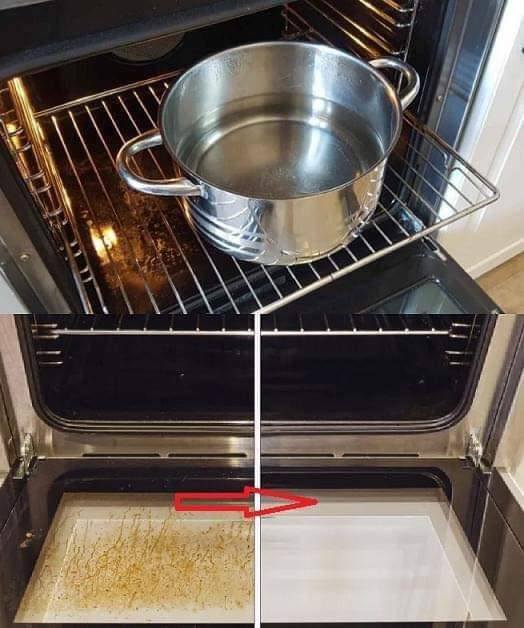ADVERTISEMENT
For Complete Cooking STEPS Please Head On Over To Next Page Or Open button (>) and don’t forget to SHARE with your Facebook friends
Step 3: Create a Cleaning Paste
Now that your oven is empty, it’s time to clean the interior. For an effective and natural cleaning solution, create a paste using baking soda and water. Mix about 1/2 cup of baking soda with a few tablespoons of water to form a thick paste. The consistency should be spreadable but not too runny.
Step 4: Apply the Paste to the Oven
Spread the baking soda paste over the interior surfaces of the oven, including the sides, bottom, and door. Avoid the heating elements, as the paste may interfere with them. Use your fingers or a cloth to coat the oven with the paste, focusing on any greasy spots or areas with heavy build-up. Let the paste sit for at least 15-20 minutes to work its magic.
Step 5: Wipe Away the Grime
After the paste has had time to sit, use a damp cloth or sponge to wipe away the baking soda mixture. You’ll notice that the grease and grime will start to lift away easily. For stubborn spots, use a plastic spatula or scraper to gently loosen the residue without damaging the oven’s surface.
Step 6: Spritz with Vinegar
Once you’ve removed the majority of the baking soda paste, grab a spray bottle filled with white vinegar. Spray the vinegar over any remaining areas with residue. The vinegar will react with the baking soda, causing it to foam. This reaction helps to dissolve any remaining grease and food particles.
Let the vinegar sit for a minute, then wipe the interior again with a clean damp cloth. Repeat the process as necessary until the oven is spotless.
Step 7: Final Touches
Once the interior is clean, wipe the oven door with a damp cloth to remove any grease or streaks. Dry the surfaces with a microfiber cloth or paper towel to leave a streak-free finish. Reinsert the oven racks and any other items that were removed earlier.
Optional: Quick Oven Self-Cleaning Function
If your oven has a self-cleaning function, you can take advantage of it to make the process even easier. Most self-cleaning ovens heat up to high temperatures, turning grime into ash, which you can then wipe away with a cloth. However, keep in mind that this process can take a couple of hours, so it may not be as quick as the baking soda method. But if you’re looking for a hands-off approach, this might be the solution for you.
Pro Tips for Faster Oven Cleaning
- Use the Oven While It’s Still Warm: If you’ve just finished cooking and your oven is still warm, try cleaning it while it’s not completely cooled down. Warm surfaces make it easier to loosen grease and grime, so it can speed up the process.
- Prevent Future Messes: Consider lining the bottom of your oven with a non-stick oven liner to catch drips and spills. Just make sure to remove it before using the self-cleaning function.
- Clean the Oven Regularly: Cleaning your oven once a month or every few weeks can prevent heavy build-up, making each cleaning session faster and easier.
The Takeaway
Cleaning your oven doesn’t have to be a time-consuming or frustrating task. With a little baking soda, vinegar, and some quick scrubbing, you can restore your oven to its sparkling best in just a few simple steps. Not only will it look brand new, but it will also run more efficiently, cook your meals evenly, and smell better.
By incorporating these quick cleaning techniques into your routine, you’ll save time, energy, and effort—leaving you with more time to enjoy your cooking. So, the next time your oven is in need of a little TLC, try these easy steps and make your oven look and feel like new!
